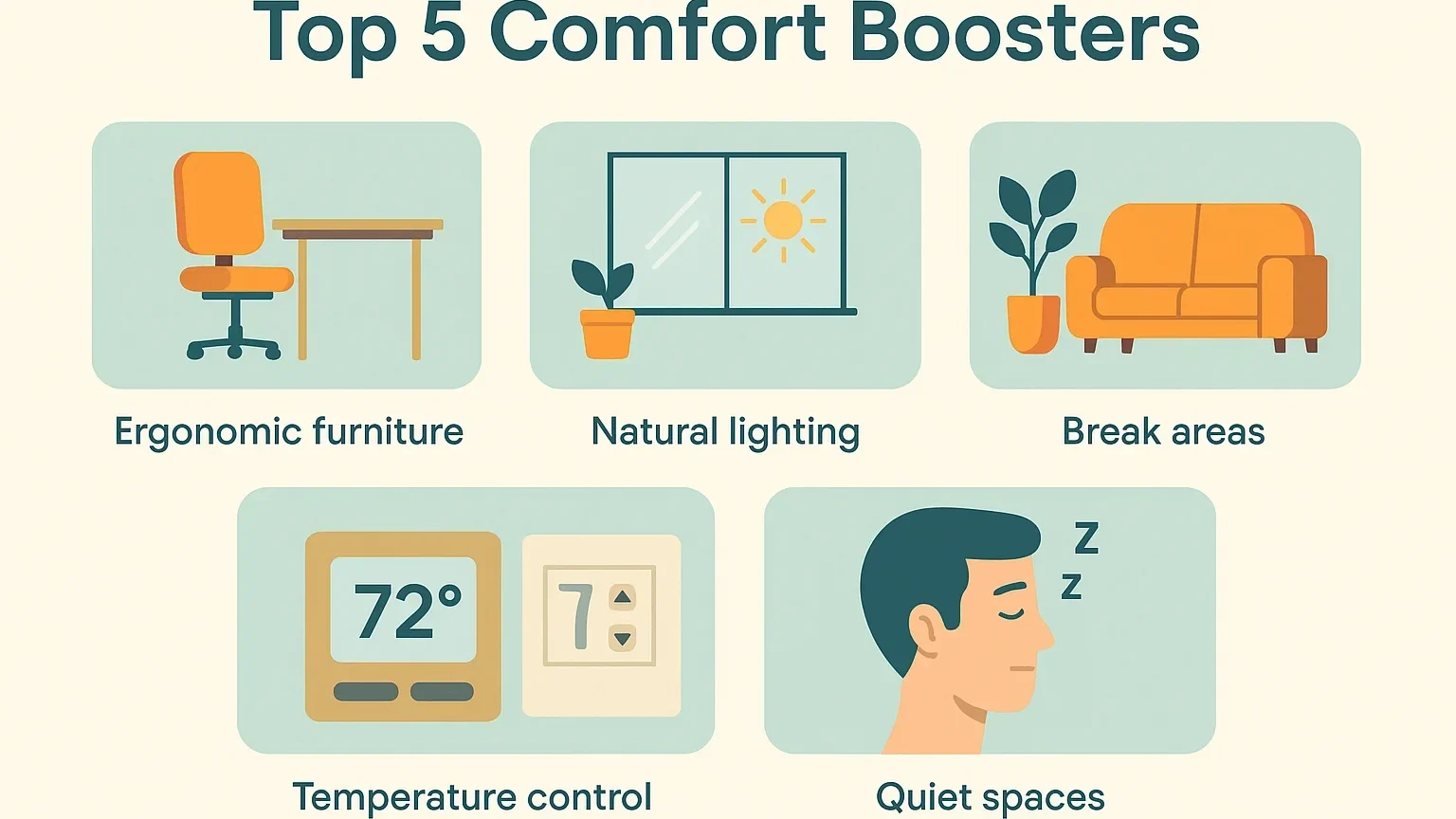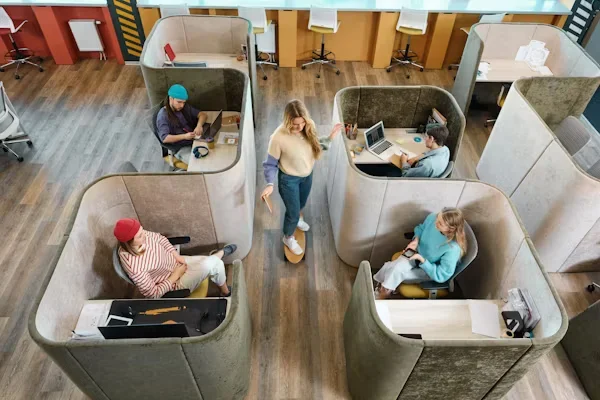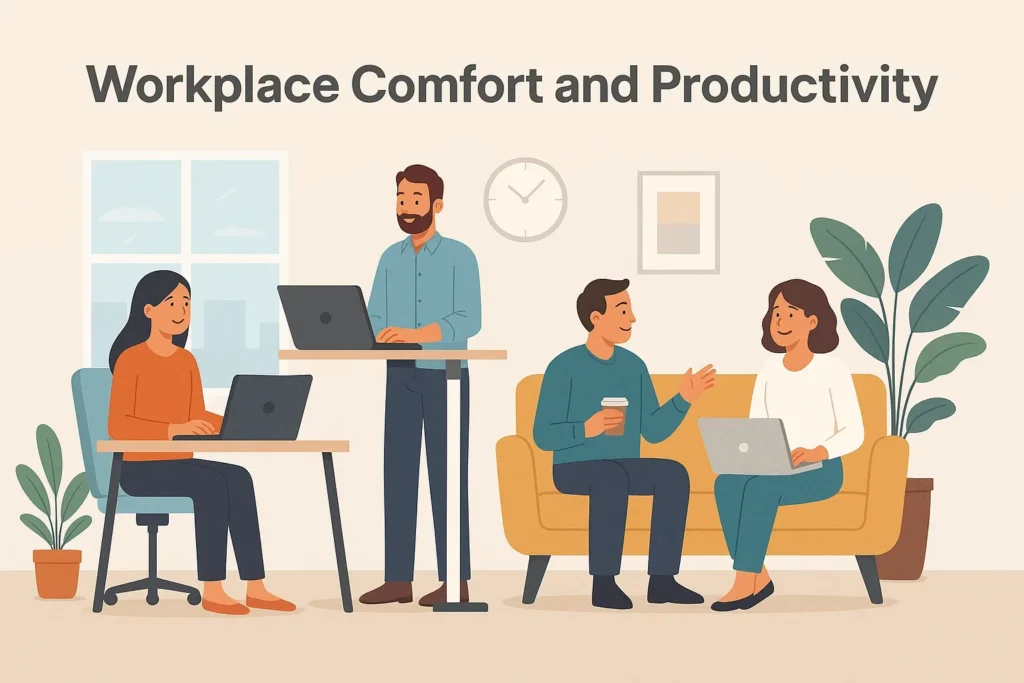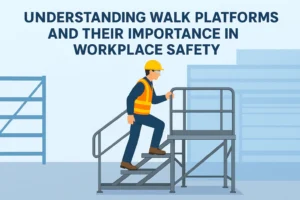Disclaimer: The information in this article is for general informational purposes only and does not constitute professional business, legal, or health advice. Business owners should consult with qualified professionals before making significant workplace changes.
When employees feel comfortable, they tend to work better. It’s not a fluffy idea; it’s a proven business strategy. Comfort in the workplace plays a direct role in employee performance, morale, and retention. That’s why smart business owners pay attention not just to deadlines and metrics, but also to the atmosphere in which their teams work. Here’s a practical breakdown of creating a more comfortable, productive workplace.
1. Rethink Your Office Layout
Let’s start with the obvious: the space itself. A crowded, poorly lit, or noisy office does nothing for productivity. Consider whether your current layout supports the kind of work your team does.
Open spaces with breakout areas can help if your business thrives on collaboration. Individual workstations or quiet zones might be better if your employees need deep focus. Flexibility is key. Modular furniture, adjustable desks, and thoughtful equipment placement can go a long way toward creating an adaptable and user-friendly environment.
2. Invest in Quality Lighting and Ergonomics

Lighting isn’t just about visibility; it affects mood and alertness. Poor lighting, especially fluorescent glare, can cause headaches, eye strain, and fatigue. Instead, use a combination of natural light and adjustable LED options. Make sure employees can customize their lighting as needed.
Equally important is ergonomics. Comfortable chairs, properly aligned monitors, and adjustable desk heights reduce physical strain. Employees who don’t have to shift or stretch constantly to find comfort are more likely to stay engaged with their work. OSHA provides helpful ergonomic guidelines for workstations, a solid starting point for setting up an office that minimizes physical stress.
3. Control the Temperature (Seriously)
Temperature might seem like a minor issue, but it’s often one of the top complaints among employees. Too cold, and people get distracted. Too hot, and they feel sluggish. A consistent, moderate temperature usually around 71°F (22°C) works well for most people.
Consider portable fans or heaters for individual control if your building’s HVAC system is outdated or uneven. Invest in an innovative climate system that lets you manage zones. Your team will thank you, and you’ll likely see fewer midday yawns.
4. Create Clean and Inviting Restroom Spaces

Restrooms are often overlooked in productivity discussions, but they shouldn’t be. A clean, modern restroom speaks volumes about how much a company cares for its employees. It’s not just about hygiene it’s about respect.
Update old fixtures, ensure daily cleaning, and consider installing durable materials like plastic bathroom partitions for easy maintenance and long-term durability. These minor upgrades can change the entire workplace experience. Employees notice when things are well-maintained, and attention to detail encourages them to take pride in their surroundings.
5. Offer Break Areas That Let People Recharge
A break room shouldn’t just be a microwave and a table. Think about creating a space where employees can truly relax, even for a few minutes. Add comfortable seating, calming décor, and amenities like coffee machines, healthy snacks, or quiet reading areas.
These touches can reduce stress and boost morale. When employees feel refreshed, they return to their tasks with a more explicit focus and more energy. Productivity isn’t just about pushing through; it’s about knowing when to pause and recharge.
6. Promote Mental Wellness Through the Environment

Stress at work is unavoidable, but how an office is designed can either reduce or amplify it. Plants, natural elements, or artwork can create a more calming atmosphere. Encourage personalization of workspaces when people feel a sense of ownership over their environment and feel more at ease.
Noise can also be a significant stressor. Acoustic panels, noise-canceling headsets, or even background white noise can help manage distractions in busy offices. The goal is to support employees in staying focused without making them feel isolated or boxed in.
7. Don’t Overlook the Power of Transparency and Communication
While physical comfort matters, psychological comfort is just as important. Clear communication, open-door policies, and transparency in decision-making foster a sense of security and trust.
Employees who know what’s expected of them and feel heard are less likely to burn out or disengage. Set up regular check-ins, ask for feedback, show leadership values and input, and act on it.
8. Encourage Movement and Flexibility

Long hours at a desk don’t equal high output, and they often lead to burnout. Encourage employees to get up, stretch, take short walks, or even switch workstations during the day.
Standing desks, wellness challenges, or simple movement reminders can make a huge difference. People perform better when their bodies are in motion at regular intervals. It improves circulation, reduces fatigue, and clears the mind.
Final Thoughts
Improving comfort and productivity isn’t about expensive overhauls or flashy perks. It’s about making intentional changes that show employees well-being is a priority. From ergonomic chairs to thoughtful communication, small shifts can create significant results.
Business owners who recognize the connection between comfort and performance are already ahead of the curve. As work culture continues to evolve, those who invest in their employees’ experience will see happier teams and better results.












